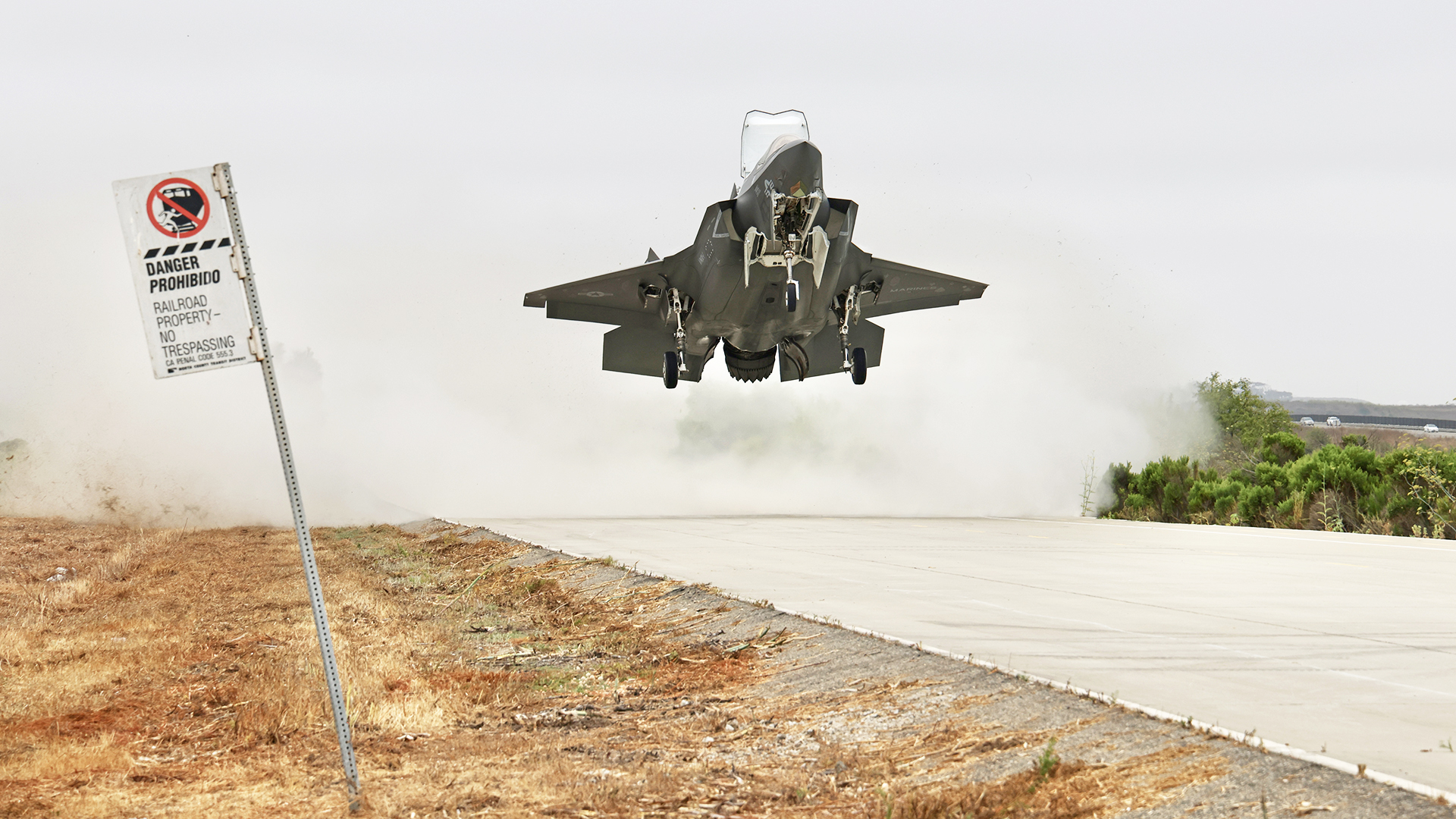The Marines just landed an F-35B Joint Strike Fighter on an old 50-foot-wide highway in Southern California, refueled and rearmed, and took back off again. At this same improvised forward arming and refueling point, a Marine MV-22 Osprey tilt-rotor passed over a torpedo to a waiting Navy MH-60R Seahawk helicopter. This was a glimpse of what is to come for future Marine operations in the Pacific, and The War Zone was there to watch all of it unfold.
This is a preview of a very in-depth, first-person series of reports that are coming soon as part of our upcoming VMX-1 week where we will examine firsthand how this cutting-edge Marine Aviation unit is paving the way for winning a future fight in the Pacific.
The United States Marine Corps knows that in order to win any future conflict in the Indo-Pacific theater they will have to work like never before with the other services, and do so from very austere locales. Preparing to win that conflict and writing the playbook needed for it falls on the shoulders of the Marines of Operational Test and Evaluation Squadron One (VMX-1).
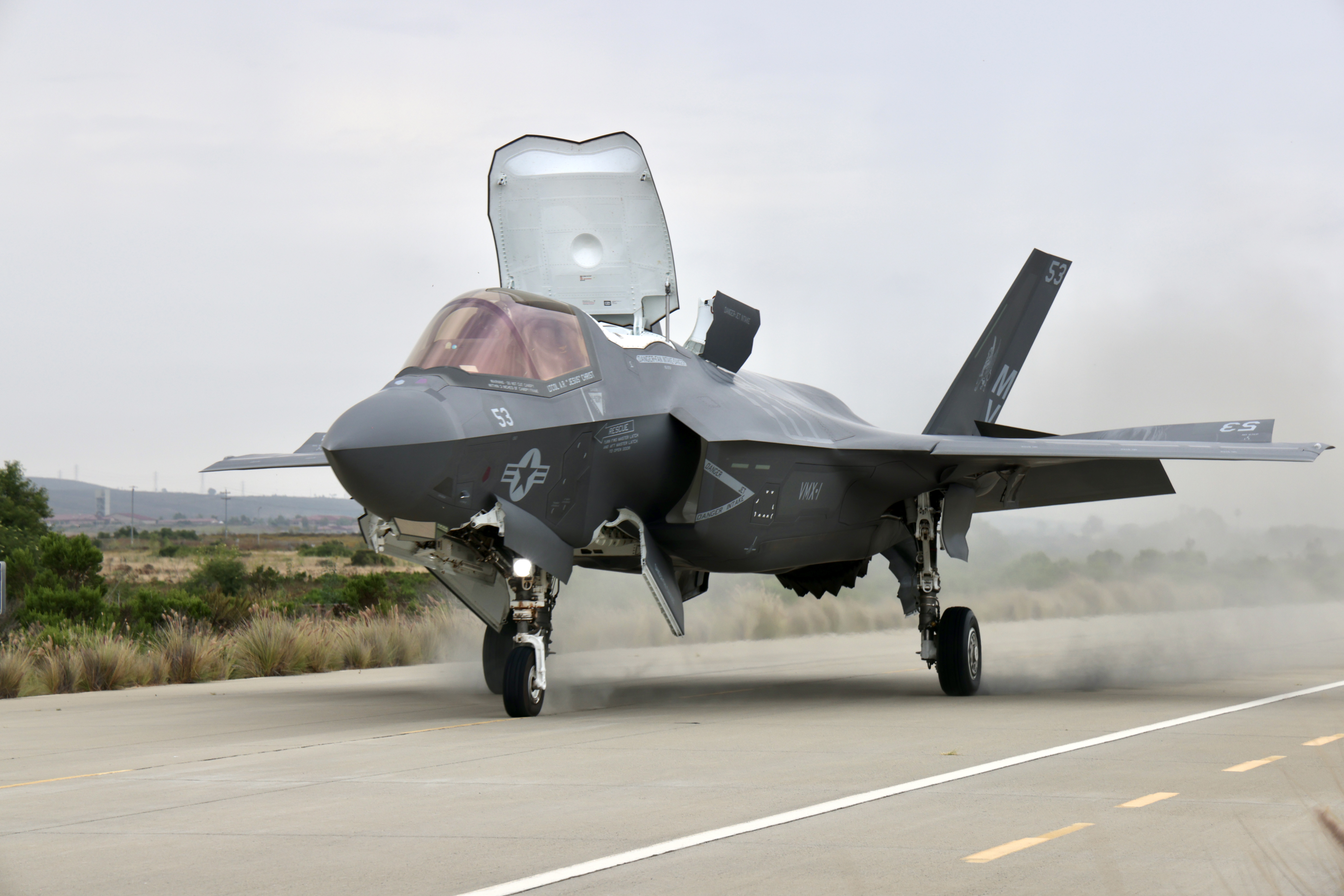
This week VMX-1 gathered nine squadrons and other units from the Marines, Air Force, and Navy to conduct the latest iteration of a training event known as ‘Obsidian Iceberg.’ This is an organic effort to realize the distributed operations concept for the STOVL-capable F-35B by solving operational challenges associated with operating a fifth-generation fighter at remote locations that have little organic logistical support, let alone long, tidy runways. The exercise also seeks to leverage VMX-1’s multi-type fleet to rapidly develop and validate the tactics, techniques, and procedures to effectively conduct customizable nodal Expeditionary Advanced Base Operation (EABO).
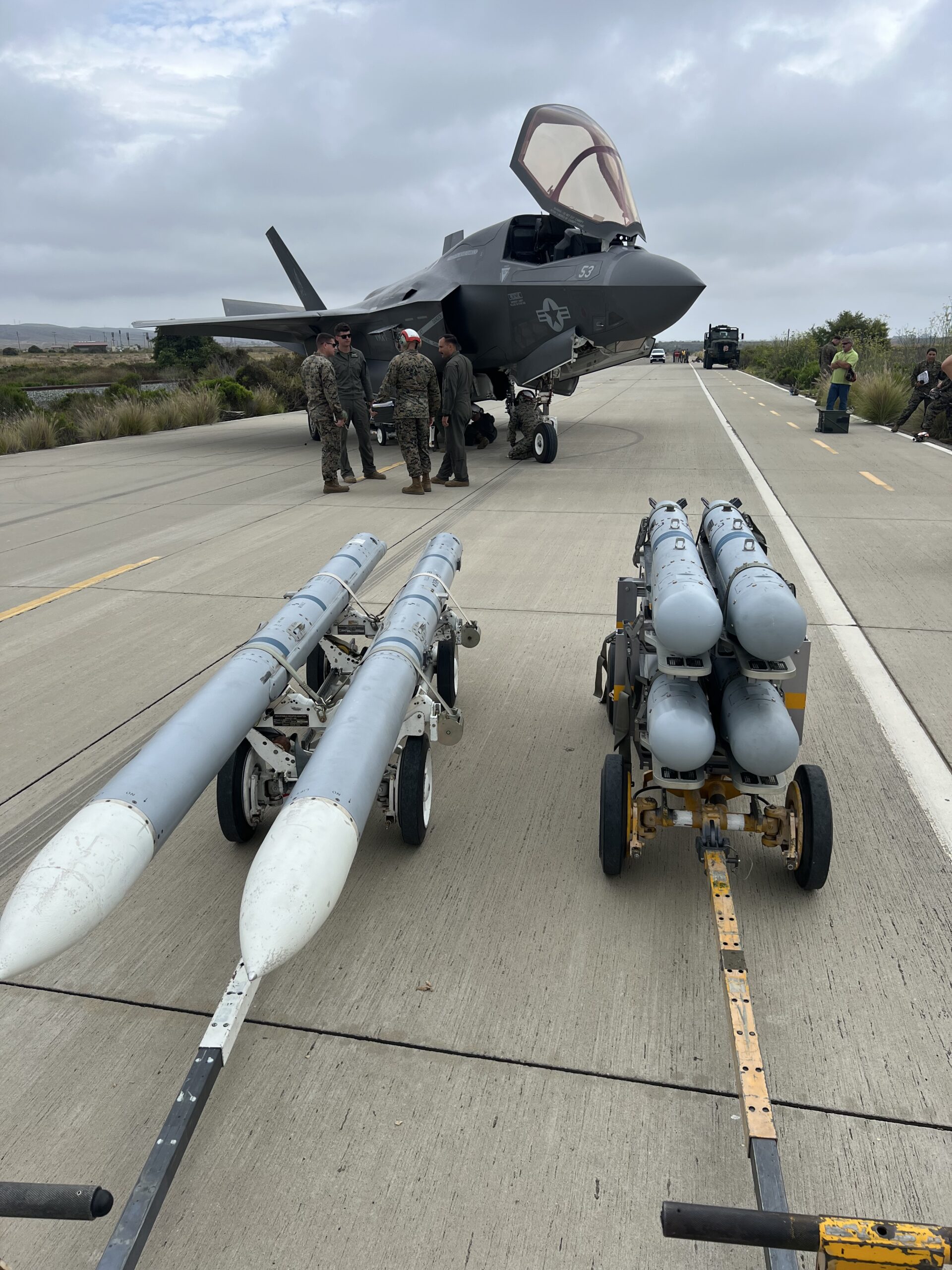
Located between train tracks and I-5 near Camp Pendleton, VMX-1 found the perfect place to conduct Obsidian Iceberg 23.1. The old road used to be part of the Pacific Coast Highway and provided the perfect challenge for all of those involved. It has power lines and ditches to the west and active train tracks a few yards to the east. The road is no stranger to Marine aviators. Known as VSTOL-101, it served for many years as a practice landing site for Marine Harriers. VMX-1 resurrected the site for this unique training event.
While Obsidian Iceberg’s main objective is to assess the minimum landing width and length for the F-35B, VMX-1 used several of its aircraft to perform a variety of different roles. There, MV-22Bs were used to carry ordnance, which included eight GBU-53/B Small Diameter Bombs IIs/Stormbreakers, as well as two AIM-120 air-to-air missiles. It also carried fuel and another F-35 pilot that would swap seats with the pilot that brought the jet into the improvised operating area.
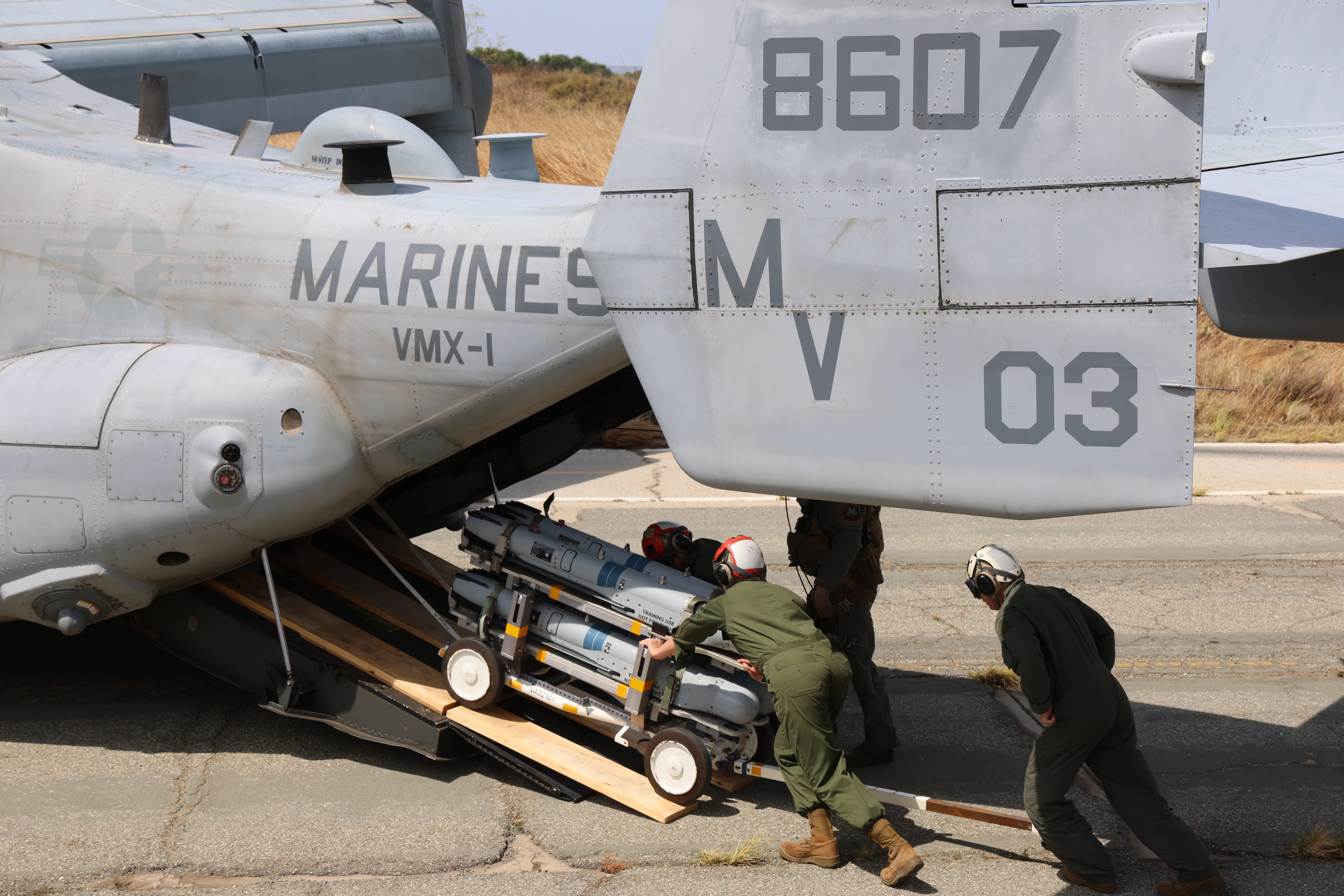
Two VMX-1 UH-1Y helicopters were used to transport a Low Altitude Air Defense team into the zone armed with FIM-92 Stinger missiles. The helicopters were then used for armed overwatch and communications duties.
Watching high above at over 15,000 feet was an Air Force MQ-9 Reaper drone from the 163rd Attack Wing at March AFB. At the end of the training event, a Navy MH-60R landed at the south end of the highway where it received fuel and was armed with a MK-46 training torpedo. This ‘jointness’ of operations may seem somewhat simple, but parts of it remain a challenge that the Marines and the Navy are focused on overcoming.
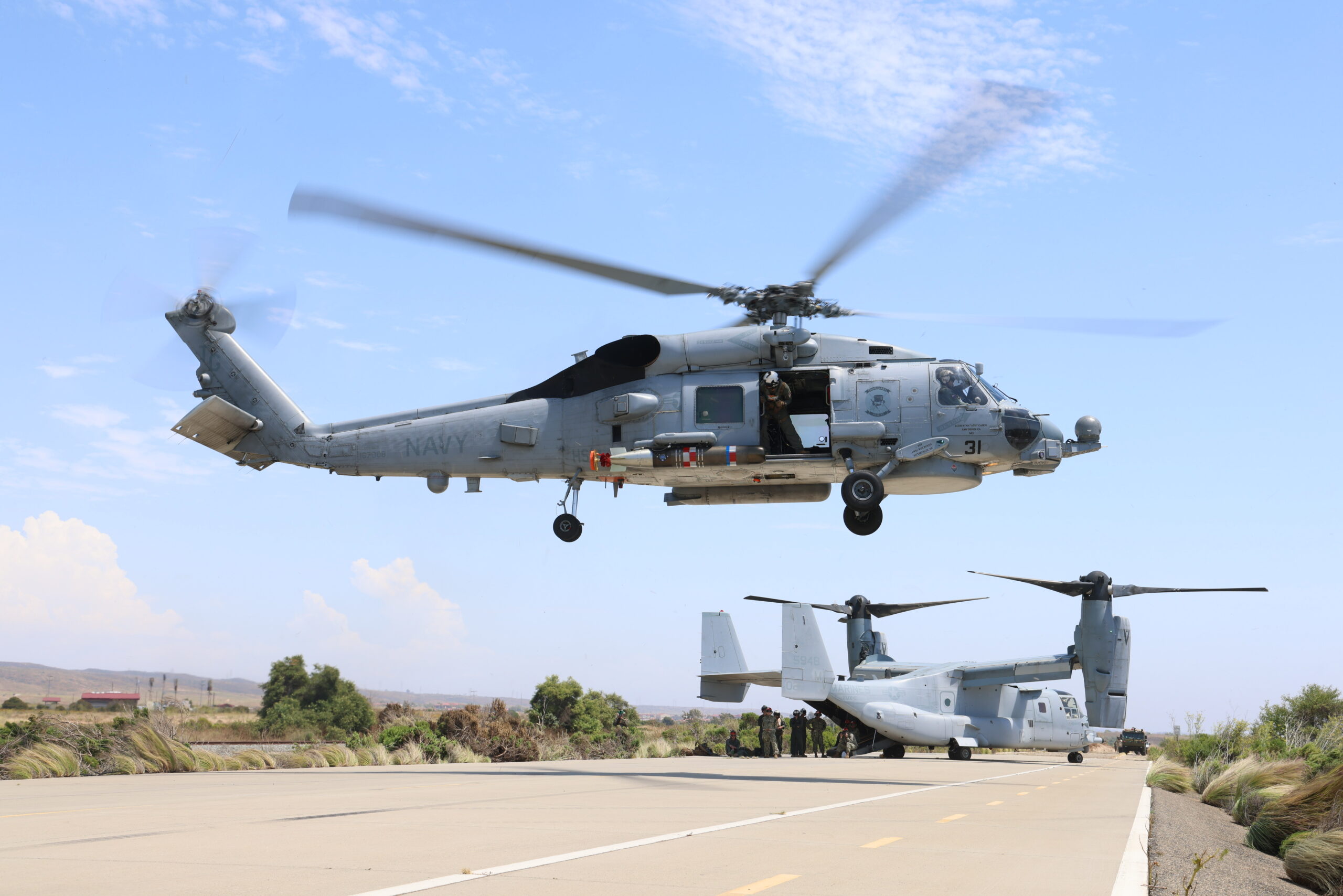
Stay tuned for much more on this exercise and the unique Marine squadron that executed it as The War Zone gets ready for VMX-1 week, which will showcase all of the unique ways Marine Aviation is preparing to fight and win a high-end future conflict that may lie ahead.
Contact the editor: Tyler@thedrive.com
